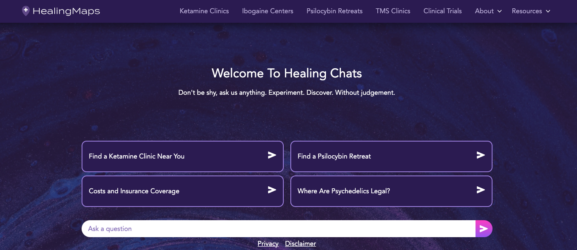At-Home Ketamine Treatment Vs In-Clinic Ketamine Experiences: Pros and Cons
In recent years, the therapeutic use of ketamine has carved out a distinct niche in the realm of mental health treatments. As its acceptance has grown, so have the options for how patients can undergo this transformative experience. The choice between in-clinic and at-home ketamine treatment (sometimes referred to as ketamine online) is not merely logistical; it also encompasses differences in the therapeutic experience, safety measures, and overall environment.
In clinics, the gold standard has been intravenous (IV) or intramuscular (IM) ketamine administration. These methods not only ensure rapid onset but also precise dosage control in a controlled environment. Contrast this with the burgeoning trend of at-home treatments where sublingual administration is the norm. This more informal setting provides flexibility and convenience, but with its own unique set of considerations.
As patients and practitioners grapple with these choices, understanding the pros and cons of each becomes paramount. This article aims to shed light on the nuances between in-clinic and at-home ketamine treatments, ensuring informed decisions in the pursuit of mental well-being.
An Overview of At-Home Ketamine Treatment vs In Clinic
| At-Home Ketamine Therapy | In-Clinic Ketamine Therapy | |
| Delivery | Typically involves prescription of at-home use ketamine medications (like lozenges or nasal sprays), that the patient administers themselves after initial consultation and prescription from healthcare provider. | Often involves intravenous (IV) administration of ketamine by a medical professional, or intramuscular (IM) injections under direct supervision of healthcare provider. |
| Supervision | Lower level of supervision during actual administration, depending on the form of ketamine used. Patients are responsible for following the provider’s instructions. | Higher level of supervision and immediate medical intervention possible. Health professionals can adjust dosages as needed. |
| Environment | Treatment is conducted in the patient’s own environment, which can be more or less comfortable, depending on individual preferences and home circumstances. | Controlled, clinical environment, which can provide a sense of security for some patients. |
| Monitoring | Patient’s physiological responses are usually self-reported or observed through a video call, which may not be as accurate. | Direct, real-time monitoring of physiological responses (e.g., heart rate, blood pressure). |
| Access & Convenience | Can increase accessibility for those in remote areas, with limited mobility, or busy schedules. No travel required. | Requires physical attendance, which can be difficult for some patients due to travel, physical disability, or scheduling constraints. |
| Cost | Can be less expensive as it often eliminates costs associated with an in-clinic visit such as travel or taking time off work. | Can be more expensive due to the overhead costs of maintaining a clinic, the staff required, and the direct supervision involved. |
| Preparation & Follow-up | Can provide telehealth appointments for preparation, setting treatment goals, and follow-up care. | Offers face-to-face appointments for preparation, setting treatment goals, and follow-up care. |
Looking for an In-Clinic Experience? Find ketamine treatment near you
At Home Ketamine Vs In Clinic: Here are the Differences
Let’s do a deeper dive into the differences between at-home ketamine treatments vs in clinic ketamine experiences.
Routes of Administration
In-Clinic (IV/IM)
Rapid Onset: Intravenous (IV) and intramuscular (IM) methods ensure the drug enters the bloodstream directly, allowing for a quick and intense therapeutic effect.
Dosage Precision: Clinicians can carefully calibrate doses based on patient weight, ensuring a consistent experience each time.
At-Home (Sublingual)
Extended Release: Sublingual administration involves placing the drug under the tongue for absorption. It tends to have a slower onset than IV or IM, providing a prolonged and milder experience.
Self-administration Challenges: Patients must be cautious about ensuring they’re taking the correct dosage. The absorption can also vary based on individual factors.
RELATED: Is Ketamine an Opioid? Why One of These Painkillers is Safer Than the Other
The Therapeutic Setting
In-Clinic
Professional Supervision: Clinics often have a medical team ready to handle any adverse reactions or complications during the session.
Structured Environment: A controlled, calm setting can enhance the therapeutic experience and reduce external distractions.
At-Home
Comfort of Familiarity: Being in one’s own space can provide a sense of security and ease, possibly enhancing the therapeutic experience.
Potential Distractions: Everyday home disturbances might interrupt or influence the session’s quality.
WHY INTEGRATION IS SO IMPORTANT: ‘First Data’ Published Showing Lack of Support During Psychedelic Integration May Lead to Harm
Guidance During Sessions
In-Clinic
Immediate Presence: Having a therapist or guide present can provide immediate support, allowing for deep exploration and processing.
Real-time Assistance: Immediate interventions can be administered if a patient begins to experience discomfort or distress.
At-Home
Virtual Guidance: While therapists might not be physically present, many at-home treatments offer virtual support, ensuring patients are not entirely on their own.
Limitations of Tech: Connectivity issues or technical disruptions can interfere with the therapeutic process.
Convenience & Accessibility
In-Clinic
Scheduled Appointments: Patients must often work around clinic schedules, which can sometimes be less flexible.
Travel Considerations: Getting to and from the clinic might pose challenges, especially post-treatment when one might feel disoriented.
At-Home
Flexible Timing: Treatments can be scheduled around one’s own convenience, making it easier to fit into busy lives.
No Travel Required: Patients can begin their session without the added stress of commuting.
Cost Implications
In-Clinic
Higher Costs: The overhead for maintaining a clinic, including staff and equipment, often translates to higher charges for patients.
At-Home
Economical Option: Without the overheads of a physical clinic, at-home treatments often come at a reduced cost.
RELATED: Ketamine Infusion Cost: Here are the Price Ranges for Depression, Pain and Other Treatments
Attention & Aftercare
In-Clinic
Post-Treatment Supervision: Clinics often provide a quiet space for patients to recover and process their experience with the guidance of professionals.
Sometimes however the aftercare and integration is lacking leaving clients to navigate the sometimes murky waters that can come in the aftermath of a ketamine treatment
READ NEXT: New To Ketamine Treatment? Here’s A Glossary of Ketamine Therapy Terms
At-Home
Self-Managed Recovery: Post-treatment, patients are often on their own, which can be both an advantage and a challenge.
Dependence on Virtual Support: Any post-session discussions or check-ins would likely be virtual, which might not provide the same depth of connection as in-person interactions.
RELATED: Ketamine Telehealth: An Affordable Option for Ketamine Treatment
At Home Ketamine vs In Clinic: Personal Experience and Opinion

At Home Ketamine
All of my ketamine experiences have been at home with sublingual or intranasal modes of administration delivered or picked up from compounding pharmacies prescribed by my physician. I have found it useful and it has enhanced the therapy processes that I have been in anyways.
It is important to focus on healthy habits and addressing underlying thought and behavior patterns before and after ketamine experiences as ketamine boosts neuroplasticity. But in order for it to support long term wellness, one has to integrate techniques of taking good care of mind, spirit and body into life.
I have had very deep profound and sometimes a bit frightening states of consciousness from my ketamine journeys. I can imagine that it would have been great to have a therapist or physician in person to process these or during the occasionally lackluster journeys to increase my dose without worry.
READ NEXT: Are Psychedelic Diagnoses Freeing Us? Or Caging Us?

IM and IV Ketamine with Medical Professionals
Our editor has had two deep experiences with medical professionals. He used 100 mg intramuscular, with an EMT, nurse or a doctor nearby. The big doses vaporized his regular world. He vanished into a strange dark realm. He was floating on a sea of nothingness.
This darkness felt blissful one second. And then, the next minute, he was dropping deeper into a hole, scared he was going to die.
With medical professionals nearby, though, he was more able to relax, go inward and say, “Ok, I’m ready to die.” Once he let himself “die,” his thoughts stopped and he felt like he was part of the fabric of the cosmos.
“Dying” wasn’t fun, exactly. Of course, he didn’t die. (People on ketamine very rarely die.) But the next day, he felt more content, more able to make hard decisions. In particular, he was able to clean out a closet full of old books and notebooks he’d clinging onto like a hoarder.
Being in settings with medical professionals helped our editor go deeper. The feeling of “dying” gave him a new perspective on life, and helped him let go of the past. And the next time he did a big dose, he was even more able to relax.
READ NEXT: Do Dosages of Psychedelics Differ for Anxiety, Depression, Pain and PTSD?
The Future of At Home Ketamine vs In Clinic
In the evolving landscape of psychedelic therapy, the choice between at-home and in-clinic ketamine treatments hinges on individual preferences, needs, and circumstances. While in-clinic settings offer a controlled environment, professional supervision, and immediate therapeutic presence, they also come with a higher price tag and the added responsibility of travel and scheduling.
On the other hand, at-home treatments, while more flexible and cost-effective, require a more proactive role from the patient in ensuring a suitable environment and may lack the immediacy of in-person care. The advent of virtual therapeutic guidance has bridged this gap to some extent, but the experience is undeniably different from being in the same room with a therapist.
Ultimately, it’s crucial for potential patients to assess their comfort levels, financial situation, and therapeutic needs when deciding between the two. Additionally, consultation with professionals and trusted sources is invaluable in making an informed choice. As the science and practice of ketamine therapy progress, it’s hopeful that even more options and refined protocols will emerge, offering individuals the best possible experience tailored to their unique journeys toward well-being.
READ NEXT: Ayahuasca Helped Find Lost Amazonian Children. Can Psychedelics Really Give You Superpowers?



